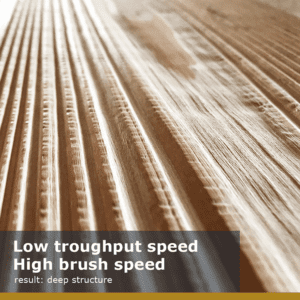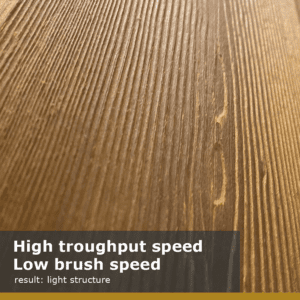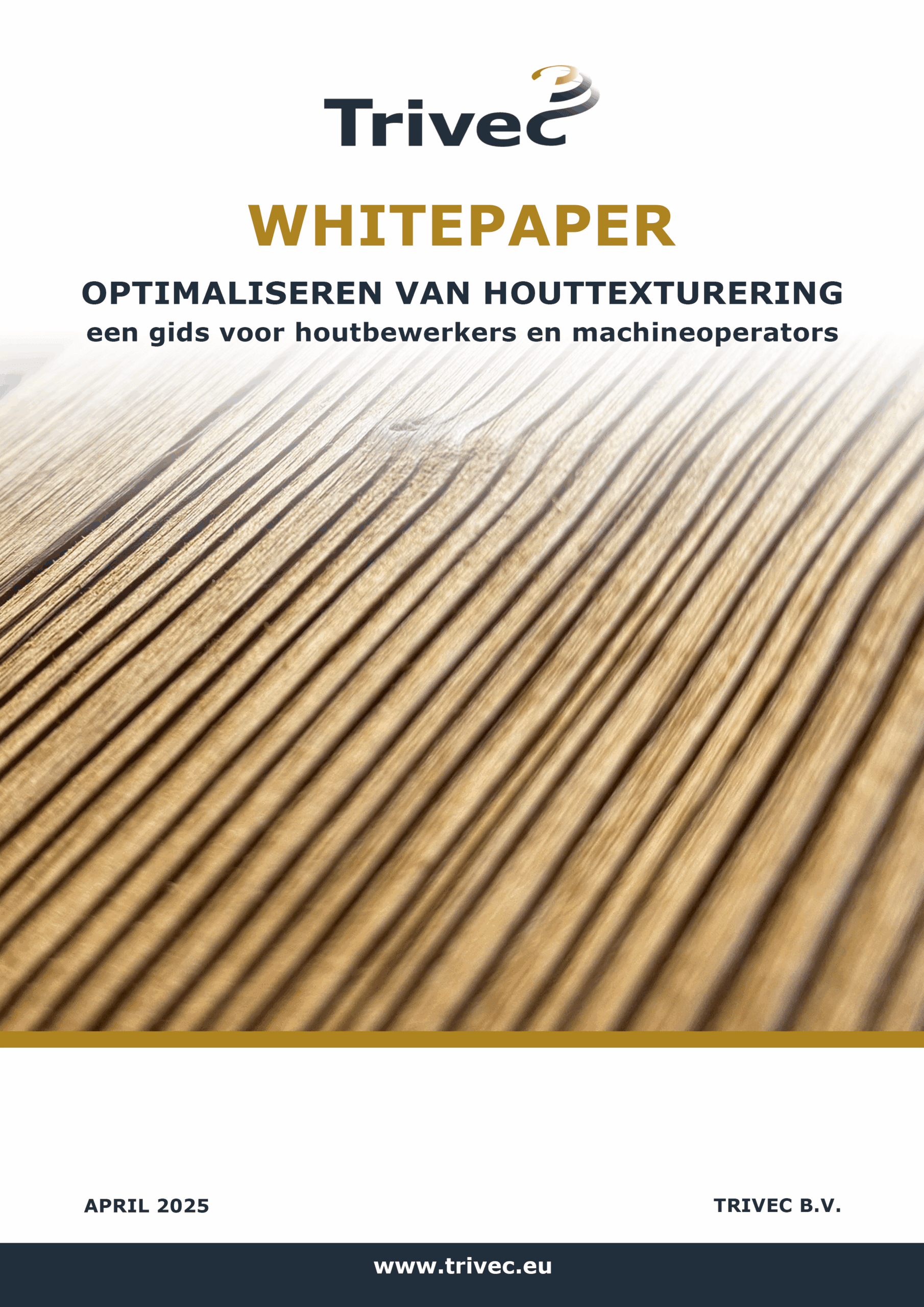Achieving the perfect wood texture: Balancing speed, quality, and efficiency
If you’re involved in woodworking, you’ve likely faced the challenge of wanting to texture and brush wood effectively without sacrificing quality. Perhaps you’ve relied on the same settings for years, but you’re wondering if brushing wood at high speeds could offer a better solution. At Trivec, we specialize in helping you find that sweet spot, offering advanced solutions that deliver speeds of up to 70 meters per minute—without compromising the finish you’re aiming for.
Speed is a game-changer when brushing wood at high speeds, but it’s not the whole story. The real magic happens when you strike the right balance between feed speed, brush speed, and the number of brush units. Add in variables like brush type, cutting side of a brush and how long it’s been in use, and you’ve got a recipe for either success or frustration. Let’s break it down and explore how to optimize your process for brushing wood at high speeds.
How speed impacts your wood texture
The settings you choose directly influence your final result when brushing wood at high speeds. Here’s a quick guide to understanding the relationship between speed and texture:
- High feed speed, low brush speed: You’ll get fast production with a light, subtle texture. Perfect for quick turnarounds when depth isn’t the priority.
- Low feed speed, high brush speed: This combo delivers a more intense texture but slows down production. Ideal for projects where detail trumps speed.
- More brush units: Adding units allows for deeper textures even when brushing wood at high speeds, reducing the need for multiple passes.
Finding the right mix depends on your specific goals. But without testing, you might not realize what’s possible with brushing wood at high speeds.
Common pitfalls in wood texturing
Even with the best intentions, it’s easy to hit roadblocks when brushing wood at high speeds:
- Too fast: The texture stays shallow, leaving your wood looking unfinished.
- Too slow: Production drags, costs climb, and deadlines loom larger.
- Too few brush units: You’re forced to run extra passes, wasting time and effort.
These challenges often stem from sticking to fixed settings without questioning their efficiency. What worked five years ago might not be the best approach for brushing wood at high speeds today.
Unlocking efficiency: Small changes, big results
Imagine tweaking your process just slightly and seeing a major payoff when brushing wood at high speeds. What if you could:
- Increase speed by 10% while maintaining the same texture quality?
- Adjust brush pressure for a smoother, more refined finish?
- Add brush units to cut production time without extra steps?
These aren’t hypothetical scenarios—they’re opportunities waiting to be explored through brushing wood at high speeds. The catch? You won’t know what works until you test it.
Stop guessing, start testing
Why rely on trial-and-error when you can see proven results from brushing wood at high speeds? Optimizing your wood texturing process is simpler than you think. Here’s how to get started:
- Reach out: Contact us and tell us about your production challenges.
- Test it out: Experiment with different settings for brushing wood at high speeds on your wood samples.
- Refine your process: Use the insights to work smarter, not harder.
At Trivec, we’re all about helping you save time, cut costs, and achieve the perfect texture—every time—through brushing wood at high speeds.
Take the next step
Ready to see the difference for yourself? Schedule a test at our Experience Center and discover how brushing wood at high speeds can transform your workflow. Don’t settle for “good enough” when “great” is within reach. Let’s find the optimal settings for your wood together—contact us today!




